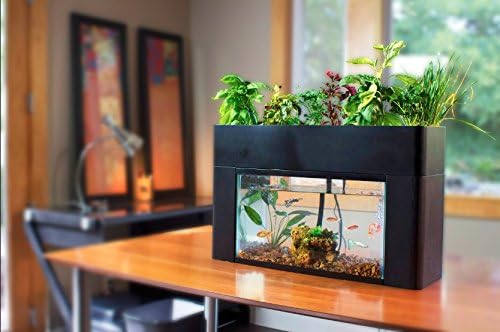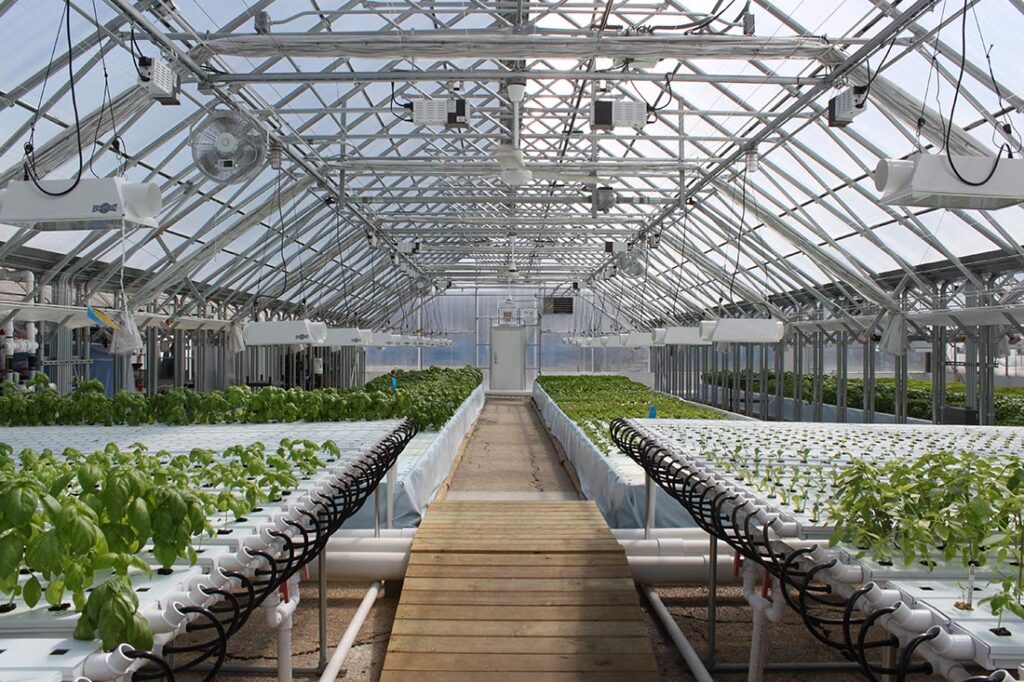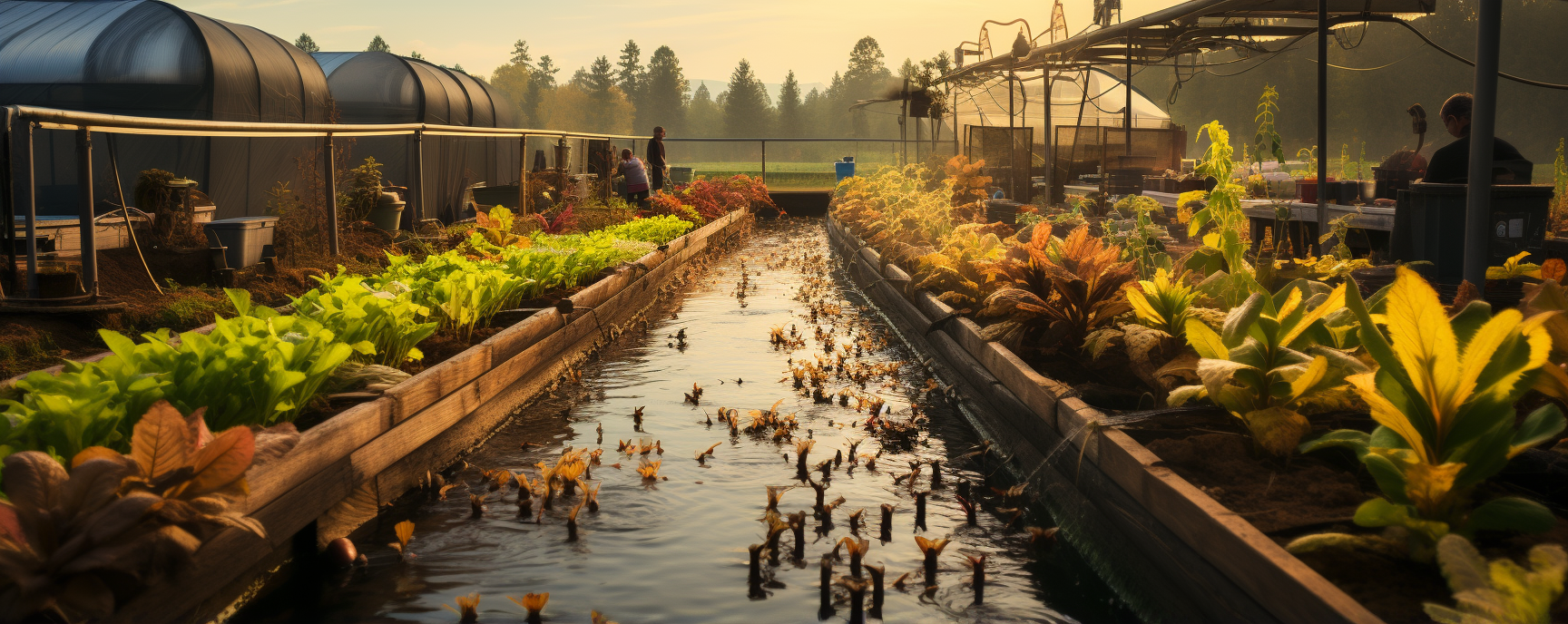Aquaponics is transforming lives around the world. From schools to large-scale farms, real-world examples showcase the incredible potential of this sustainable food production method. Let’s explore some inspirational case studies illustrating how aquaponics is making an impact, from fostering academic growth to feeding communities.
Introduction
Seeing aquaponics in action offers living proof of what’s possible. As interest in urban agriculture surges, aquaponics provides a space-efficient, productive way to cultivate both fish and plants. Its versatile applications span educational facilities, commercial enterprises, community programs and home hobbyists.
Aquaponics case studies give us an inside look, revealing the challenges and successes along the way. They educate us on best practices while inspiring new ventures. Real-world examples help convert theory into tangible results.
This article will highlight remarkable aquaponics endeavors across diverse settings. From school projects nurturing students’ STEM skills to large-scale commercial farms meeting urban produce demands, we’ll explore the breadth of aquaponics in practice.
The Importance of Real-World Examples in Aquaponics
Seeing aquaponics systems thrive in actual implementations is invaluable. It demonstrates functionality beyond controlled lab environments. Real-life case studies help us envision our own potential systems.
They reveal important considerations like system sizing, plant and fish species selection, maintenance needs and troubleshooting challenges. We learn operational tips directly from fellow aquaponics practitioners.
How Case Studies Inspire and Educate
Informative case studies empower and motivate us. We realize aquaponics can flourish in spaces from classrooms to warehouses. This firsthand knowledge guides our own system planning and design.
Sharing challenges encountered and overcome helps prepare new ventures. Case studies accelerate the learning curve, allowing us to bypass common pitfalls. They showcase the boundless creativity possible, like repurposing materials into aquaponics components.
Let’s explore this diversity through remarkable examples.
Educational Aquaponics
Academic aquaponics programs engage students in hands-on STEM education. Caring for a living ecosystem teaches biological cycles and technical skills. Students gain confidence through system ownership and edible results.
Westside Academy in Florida
Westside Academy began integrating aquaponics into its curriculum in 2013. Students assembled a small system using a 100-gallon fish tank. Over time, additional grow beds were added.
This evolving system provides multidisciplinary learning across science, math, engineering and technology skills. Students problem-solve issues like pump failures or water chemistry imbalances.
Westside’s inspiring aquaponics program demonstrated the value of experiential learning. Students gained practical knowledge and valuable emotional connections through system participation.
Brooklyn’s EdenWorks
This pioneering urban farm couples vertical aquaponics with STEM education. Located in a Brooklyn warehouse, EdenWorks engages the community through farm tours and hands-on workshops.
Their stacked system design optimizes space for raising tilapia and greens. Workshops teach aquaponics fundamentals while allowing participants to get hands wet. EdenWorks is advancing aquaponics through innovation and local outreach.
STEM Skills and Vocational Training
Beyond science principles, aquaponics teaches plumbing, construction, electrical and monitoring skills. Students gain confidence, responsibility and valuable knowledge for future careers.
Aquaponics’ multidisciplinary nature makes it the perfect STEM teaching tool. Paired with business principles, it can even lead to entrepreneurial opportunities down the road.
Commercial Aquaponics
From boutique urban farms to large-scale vertical operations, commercial aquaponics is redefining food production. Local, sustainable systems are reducing distribution chains and emissions.
| Type | Scale | Considerations |
|---|---|---|
| Small Commercial | 500 – 5,000 sq ft | Urban locations, direct to consumer sales |
| Large Commercial | 5,000+ sq ft | Volume wholesale distribution |
| Vertical Farms | Multi-level stacking | Advanced monitoring, specialized lighting |
Urban Organics in Minnesota
This pioneering urban farm in St. Paul, MN transformed an old brewery into a commercial aquaponics facility. They raise perch and leafy greens, supplying local stores and restaurants.
Urban Organics overcame early challenges like system leaks and disease outbreaks. Today they operate a thriving, profitable model for regional food production. Their story is an inspiration for urban farmers.
Large-Scale Commercial Farms
Large greenhouses like Superior Fresh in Wisconsin operate commercial aquaponics at acre scales. Massive systems with advanced monitoring grow tons of fish and produce. Automated harvesting and processing allow wholesale distribution.
These systems require extensive expertise and investment. But efficiencies of scale allow them to supply grocers at competitive pricing. Regional systems help localize food economies.
Reducing Food Transportation Costs and Emissions
Commercial aquaponics farms situated near urban centers dramatically reduce “food miles.” Local systems eliminate cross-country transport from centralized agricultural regions. This slashes fuel usage and carbon emissions.
For example, an aquaponics farm outside Chicago can supply the city year-round. This avoids the incredible mileage accrued shipping from California and Mexico. Local food production is a game changer.
Hobby Aquaponics
Home and apartment aquaponics systems allow gardening in unlikely places. Compact setups offer edible greens and calming nature. Desktop designs require minimal space and upkeep.
Paul’s Apartment Setup
Paul lives in a Chicago high-rise apartment. He built a small aquaponics system using a 20-gallon tub and plastic storage bins. Goldfish provide the fish waste to fertilize basil, lettuce and microgreens.
This compact system fits in a corner nook, providing garden tranquility. The aquarium is soothing while delivering fresh vegetables. For Paul, aquaponics unlocks gardening potential despite limited space.
Desktop Aquaponics Garden

All-in-one desktop kits like the AquaSprouts Garden, Self-Sustaining Desktop Aquarium Aquaponics Ecosystem Kit make aquaponics accessible. These self-contained ecosystems sit neatly on a desk or counter.
Fish waste from a small beta supplies nutrients for growing lettuce or herbs. Just add water and fish food. Desktop gardens let anyone enjoy aquaponics’ productivity andrelaxing nature.
Engaging Hobby and Mood Boost
Beyond food production, aquaponics provides a positive outlet. The routine of caring for a mini-ecosystem creates meaning and purpose. Watching fish and plants grow boosts mental health.
Aquaponics’ versatility allows systems both large and small. Hobby systems enhance wellbeing through the satisfaction of growing and nurturing life.
Community Impact
Aquaponics is building community ties through hands-on education and improving food security. Shared sites provide space for hobbyists while supplying local pantries.
Community Farms Initiative
This nonprofit provides aquaponics systems and training across the Midwest. Their shared greenhouse sites allow members to grow produce year-round. This communal approach improves access and expertise.
Produce gets divided – one portion for the grower, the rest donated to food pantries. This urban agriculture initiative is boosting regional food security.
Urban Farms and Outdoor Grow Zones

Community sites like Chicago’s Plant offer hands-on urban farming. Experts provide aquaponics workshops and demos in an outdoor greenhouse.
The site includes raised beds, grow zones and shared tools. Novices and experts grow together while exchanging ideas. Produce supplements food insecure neighborhoods.
Workshops and Build Days
Hands-on sessions are critical for sharing knowledge. Workshops allow guided builds of small systems with explanations of each component. Attendees gain the confidence to replicate the system at home.
Build days at schools and community centers build systems as teaching tools. Students gain ownership through participation in construction and launch. These hands-on experiences stick with participants for years to come.
Conclusion
Real-world aquaponics implementations reveal incredible diversity. Systems of all scales nurture fish and plants while bringing people together. We see innovation along with proven approaches.
These examples educate us on critical considerations like system sizing and maintenance. Configuration options expand from small hobby setups to integrated vertical farms. This variety highlights the boundless creativity possible.
We hope these case studies have inspired you to envision your own aquaponics oasis, whether a classroom ecosystem or commercial venture. Please browse our resources and guides to turn inspiration into reality!


